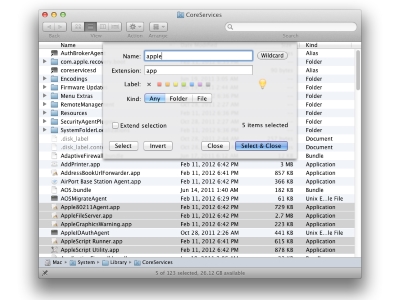
This completely removes the list of apps authorized to access Contacts. Unfortunately, it’s pretty crude: if you want to change the authorization setting for an application you’ve previously weighed in on, you have to universally wipe out all the privileges for all apps using a particular service. I knew from past experience testing Contacts privileges in my own apps, that Apple supports a mechanism for resetting privileges. For instance, in macOS 10.13 when the system asks whether to grant access to your Address Book or Contacts, the permission is saved, and managed thereafter, by TCC. But it’s the name of the system Apple uses for managing the system’s so-called “privacy database.” This is where these and other permissions, granted by the user, are saved. What’s TCC? I’ll be darned, I don’t know what it stands for. For this high level problem, I filed Radar #42081464: “TCC needs user-facing mechanism for allowing previously denied privileges.” There’s no list of the ones that I’ve denied, and no apparent option to drag in or add applications explicitly. But how do I undo it? Unfortunately, the list of applications in the Security and Privacy preference pane is only of those that I have clicked “OK” for. After denying access once, the feature has the unfortunate behavior of succeeding in activating the Finder (I guess that one is whitelisted), but failing silently when it comes to revealing the file. I’m often using this feature to quickly navigate from Xcode’s interface to the Finder’s view on the same files. This resulted in a seemingly permanent impairment to Xcode’s “Show in Finder” feature.
#Xtrafinder mojave software
I guess at some point I must have hastily denied permission for Xcode (Apple’s software development app) to control the Finder. I ran into another usability challenge that Felix didn’t itemize: the problem of denying authorization to an application and then living to regret it. Felix Schwarz made a great analysis of many of the problems on his blog. Unfortunately, there are a number of usability issues and practical pitfalls that come as side-effects of this change. These alerts are a bit annoying, but I can get behind the motivation to give users more authority over which applications are allowed to control other applications. If you’re running macOS Mojave you can see a list of applications you’ve already permitted in System Preferences, under “Security and Privacy,” “Privacy,” “Automation”.

If the user selects “OK”, the application sending the command will be thereafter whitelisted, and allowed to send arbitrary events (not just the one that prompted the alert) to the Finder. “WhateverApp” would like to control the application “Finder”. The terminology used is along the lines of: In the macOS Mojave betas, you’ll notice that invoking such a command in an application will most likely lead to a panel asking permission from the user. This is a very basic automation accomplished by sending an “Apple Event” from iTunes to the Finder. For example if you right-click a song file in iTunes, an option in the contextual menu allows you to reveal the file in the Finder.

One ubiquitous example of such an automation is the prevalence of “Reveal in Finder” type functionality. When we talk about automation on the Mac, we usually think of AppleScript or Automator, but with a broader view automation can be seen as any communication from one application to another.

The macOS Mojave betas include a significant enhancement to user control over which applications can perform automation tasks.


 0 kommentar(er)
0 kommentar(er)
